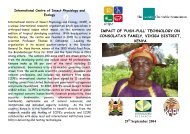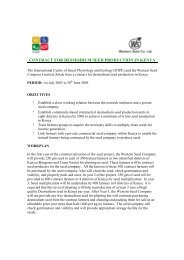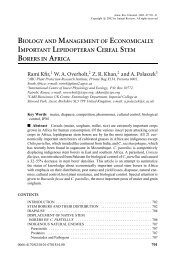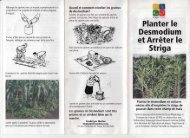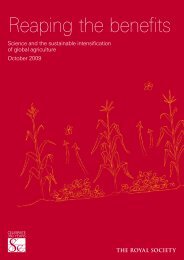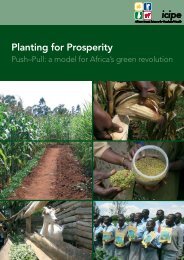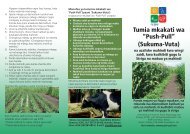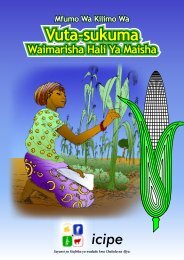A Primer on Planting and Managing 'PushâPull' Fields for Stemborer ...
A Primer on Planting and Managing 'PushâPull' Fields for Stemborer ...
A Primer on Planting and Managing 'PushâPull' Fields for Stemborer ...
- No tags were found...
You also want an ePaper? Increase the reach of your titles
YUMPU automatically turns print PDFs into web optimized ePapers that Google loves.
Busseola fusca (Figure 1a) <strong>and</strong> Chilo partellus (Figure 1b).Busseola fusca is indigenous to Africa <strong>and</strong> is present in high<strong>and</strong> mid‐altitude areas (3500ft [1077m] above sea level <strong>and</strong>higher). Chilo partellus accidentally came to Africa from Asiain the 1930s. Chilo partellus is present in low <strong>and</strong> mid‐altitudeareas (zero to 4000ft [1230 m] above sea level).Damage is caused by the worm-like larvae, which first feed <strong>on</strong>young leaves (Figure 2), but so<strong>on</strong> enter into the stems.Figure 2. Maize plant damaged by stemborer larvae2




